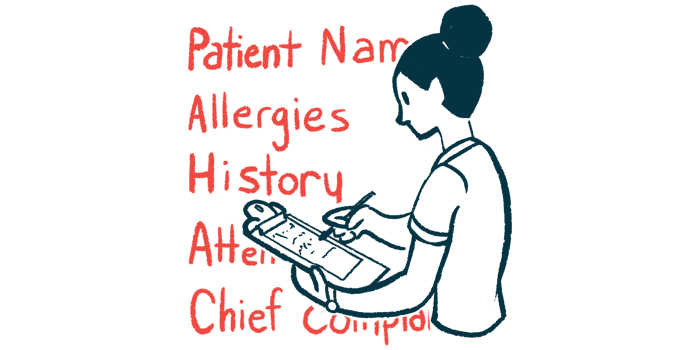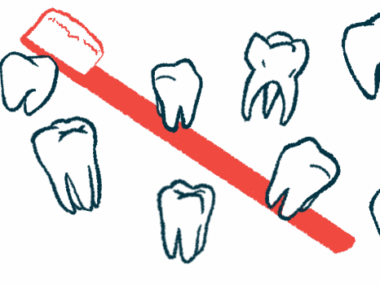Quality of Life Declines as Patients’ Symptoms Mount, UK Study Shows
Written by |

Patients with primary Sjögren’s syndrome who experience symptoms such as pain, fatigue, and anxiety are more likely to show a decline in quality of life over time, according to a real-world study from the U.K.
The study, “Primary Sjögren’s syndrome: Longitudinal real-world, observational data on health-related quality of life,” was published in the Journal of Internal Medicine.
A person’s perceived physical and mental health, indicated as a health-related quality of life (HRQoL), is significantly reduced in Sjögren’s patients. A survey conducted by Sjögren’s Disease News also found that many patients report quality of life dissatisfaction, with common symptoms including fatigue and joint pain, as well as dry eyes and mouth.
HRQoL estimates are used for cost-utility analyses, which help determine how cost-effective treatment approaches might be for patients with diseases like Sjögren’s.
As part of the study, data on disease-related symptoms such as anxiety, depression, fatigue, and HRQoL were collected in 377 patients at a regional Sjögren’s clinic in Newcastle upon Tyne between 2009 and 2020. Four symptom profile subsets, called Newcastle Sjögren’s Stratification Tool (NSST) groups, had been previously identified for these patients.
Researchers now sought to use the NSST classifications to see how symptom burden affected HRQoL in Sjögren’s patients over time. Two years of data were collected for each participant, on average.
Of the 377 participants, most were women (46 men), with an overall median age of 57. All were sorted into the four NSST subgroups: 99 with high symptom burden (HSB), 41 with low symptom burden (LSB), 68 with dryness-dominant fatigue (DDF), and 169 with pain-dominant fatigue (PDF).
One method for estimating HRQoL is the EuroQoL-5 (EQ-5D) utility score, which looks at five areas — mobility, self-care, usual activities, pain or discomfort, and anxiety or depression. An EQ-5D score of one indicates perfect health, with lower scores signifying poorer HRQoL.
Overall, 69 patients (18%) had an EQ-5D considered to be low, of less than 0.5; while 59 (16%) experienced a life quality decline to a score below zero, which the researchers called an “EQ-5D event.” A score less than zero can represent “a decline in quality of life to a health state comparable to or worse than death,” the study team wrote.
Pain, fatigue, and anxiety contributed most significantly to the likelihood of such an event.
The HSB group, who at initial (or baseline) measurements had a high symptom burden across all the symptom types, were significantly more likely to experience EQ-5D declines over time. In these patients, median EQ-5D scores fell from 0.52 to 0.19, with 41 people (41%) experiencing an EQ-5D event.
The LSB group, who had a low baseline symptom burden, fared better overall with initial and final median EQ-5D scores of 0.85 and 0.80, respectively. None of these patients’ EQ-5D scores dropped below zero.
EQ-5D events were also reported in 15% of patients in the pain-dominant fatigue (PDF) group, including some with high levels of both symptoms, and 3.5% of those with dryness-dominant fatigue (DDF).
“LSB and DDF groups have very good quality of life outcomes longitudinally, whereas PDF and especially HSB groups show reduced quality of life at baseline and further decline during the study period,” the researchers wrote.
Study findings could lead to developing new treatments, particularly for the PDF and HSB patient groups. They cautioned against including the LSB group in trials of novel therapies as there was little likelihood for gains in quality of life for this population.
The researchers also sought to know if other clinical disease measures correlated with HRQoL changes over time. The presence of coexisting conditions and higher patient-reported symptoms, measured by the EULAR Sjögren’s syndrome patient reported index (ESSPRI), were each associated with an EQ-5D decline. Other parameters, including baseline age, disease duration, sex, and baseline EULAR Sjögren’s Syndrome Disease Activity Index (ESSDAI), were not associated with HRQoL changes.
NSST stratification was a valuable tool for patient management and therapy development, the researchers said, as it was the strongest predictor for HRQoL decline, according to EQ-5D scores. “Our data support the development of an effective clinical strategy to manage symptoms such as pain, fatigue and low mood in the HSB and PDF subgroups, which likely requires a personalized, holistic approach.”
The researchers noted that some aspects of Sjögren’s may be excluded from the EQ-5D assessment.
“It is important to note also that EQ-5D UK utility may not represent the impact of all aspects of [Sjögren’s] on HRQoL, therefore other assessment tools should be also be explored,” the team concluded.






